Our Defining Moments
The stalwart Husky has a storied legacy of forging paths through darkness and danger to deliver aid wherever it is needed. Huskies don’t hunker down. They plow ahead. They find creative, innovative ways around any obstacle. They find ways to help. Amid this global pandemic, these Huskies — students, staff, professors, doctors, nurses, and graduates new and old — have been doing just that.
> Commander Alison (Laufer) Halpin ’05 (CLAS) Is Doing Her Part to Protect America
A Commander in the Commissioned Corps of the U.S. Public Health Service, Halpin runs a Covid-19 testing lab at the CDC.
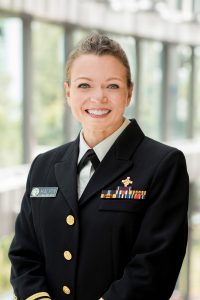 One of the most frustrating things about a pandemic, says Dr. Alison (Laufer) Halpin ’05 (CLAS), is that everything comes in waves. Preparing for each wave, she says, is like trying to turn an aircraft carrier when you can see the tsunami on the horizon.
One of the most frustrating things about a pandemic, says Dr. Alison (Laufer) Halpin ’05 (CLAS), is that everything comes in waves. Preparing for each wave, she says, is like trying to turn an aircraft carrier when you can see the tsunami on the horizon.
Halpin runs one of the clinical testing laboratories for Covid-19 at the Centers for Disease Control and Prevention (CDC) in Atlanta. She was battling the first U.S. waves of the disease in January and February, before most of us knew it was coming.
When we spoke to her in early May, she said, “Covid has been going on for so long it’s hard for me to remember what life was like before.”
During the thickest of the thick of it, Halpin was in charge of 25 CDC staff with whom she worked at the lab 24-7 for eight weeks, doing all the diagnostic testing for Covid — trying to get health organizations their results as quickly as possible. They would see people on the news, like those on massive cruise ships, and know their numbered samples had come from those people.

Halpin with her family outside Atlanta in May.
“It’s incredibly important to remember that these are kids and wives and husbands and grandparents and this can be life threatening for a lot of people and that’s really awful,” says Halpin. “I can say we are always happy when we get a negative test result.”
Halpin is a Commander in the Commissioned Corps of the U.S. Public Health Service and led the Domestic Infection Control Team at the CDC during the Ebola outbreak in 2014. Ebola was like this too, she says, but to a lesser degree. “Ebola was huge — Covid is gargantuan.”
Two things concern her most about this pandemic. First, people with no symptoms can spread it unknowingly, and second, we live in a time when people fly all over the world, which, she says, “has really changed the dynamic of how a pathogen can spread.”
Halpin is quick to remind that she’s not a virologist. But it’s clear that successfully combating both those things requires efficient, broad testing capacity.
Fortunately, by April, most state health departments were up and running doing their own testing.
“We went from processing hundreds and hundreds of samples a day down to fifty,” says Halpin. To keep them well-rested and on their game, her group transitioned to being the secondary — or surge — lab, which means they are now able to work from home until a surge in testing need brings them into the lab.
Containment
From their respective homes, with kids and dogs interrupting their Zooms, her team has been working on a number of other Covid-related projects, including opening up new avenues for local testing.
“Prevention measures of covering your cough, cleaning and disinfecting, and hand washing; those are incredibly important,” says Halpin, “but so is containment. We need to know who is sick and we need to contain them to stop the spread. That’s a real priority.”
To that end, the team is evaluating equipment alternatives to submit to the FDA. “A different product line or a different company can open up a whole new supply chain line, alleviate some of the stresses, and get testing to happen locally — if they have this robot or instrument in their laboratory they can onboard it for testing.”
The team is also working with a number of groups to sequence the virus and get the sequence data up on public repositories like the National Center for Biotechnology Information. “So you go from one laboratory being able to work on something to the entire world being able to work on it, and I think we’ve seen where getting data out publicly can advance the science.”
Even now, as the surge team, the work is intense. But Halpin doesn’t flinch at the responsibility. “I’m in public health. I have this sort of vocational calling, the sense that it’s really important to give back,” she says.
“Ebola was huge — Covid is gargantuan.”
Mentors
It would seem Halpin was destined for public health work — her mother was director of research administration for clinical studies at Albany Medical Center in New York, and her dad worked for the New York State Department of Health in the AIDS Institute. But Halpin says she was well into her UConn undergraduate career before her own path became clear.
“I knew I liked science,” she admits, but “I was also considering French. I liked a lot of things. I just kept doing things that I liked. I took Bio 107 with Dr. Tom Terry and it was amazing. So I took microbiology and then I took pathogenic microbiology.” That last class studied the extraordinary effect the simple act of hand washing had on patient outcomes, which she found fascinating. “It was a huge turning point for me,” she says. Another turning point was the work she did with leeches and gut microbiology in Dr. Joerg Graf’s lab. She’s still passionate about microbiomes and how they affect the gut. And still appreciative of her UConn mentors.
“They really did change the trajectory of my career, and I’m forever grateful for that. Dr. Terry and Dr. Graf were very encouraging of me, and I certainly would not have ended up where I am without them.”
She’s paying that forward, supporting and caring for staff and walking the walk when it comes to CDC wellness programs, which, she notes, are always important but are critical during a response.
Family
“I think although it’s incredibly scary for a lot of people and it’s stressful, when you can see a group of people come together and work at a level of productivity and incredibly high quality and also take care of each other as a team or a family, that is when things go well. That’s when there’s strong communication, strong support and leadership. We definitely don’t want this to ever happen again, but we’re learning, we’re getting better, not just for the long term but the short term. We still don’t know what the resolution of this pandemic will be.”
She tries to lighten the load with humor, sharing memes and GIFs, and she checks in with each team member regularly. “I make sure they’re eating, taking care of themselves, getting what they need for their houses. Or sometimes it’s just talking to them, reminding them to keep doing the things they love as best they can.”
What does that look like for Halpin? Working out in her home gym or getting out to do something active with her husband, whom she met doing triathlons, and their 4-year-old daughter. Fortunately Cannon, their whippet, requires lots of walking.
She also gets a lot of satisfaction from the work she does. “I could talk all day about the amazing people I work with, how humble and hard-working and inspirational they are,” she says. “And I love the work we do — being able to impact patient safety on a national level.
“I actually look forward to Mondays!”
—lisa stiepock
> Extra Points
“Our emergency food distribution system has never been more important,” says Jason Jakubowski ’99 (CLAS), ’01 MPA. The president and CEO of Foodshare gathered volunteers who have been at Rentschler handing out food to Connecticut families since March.
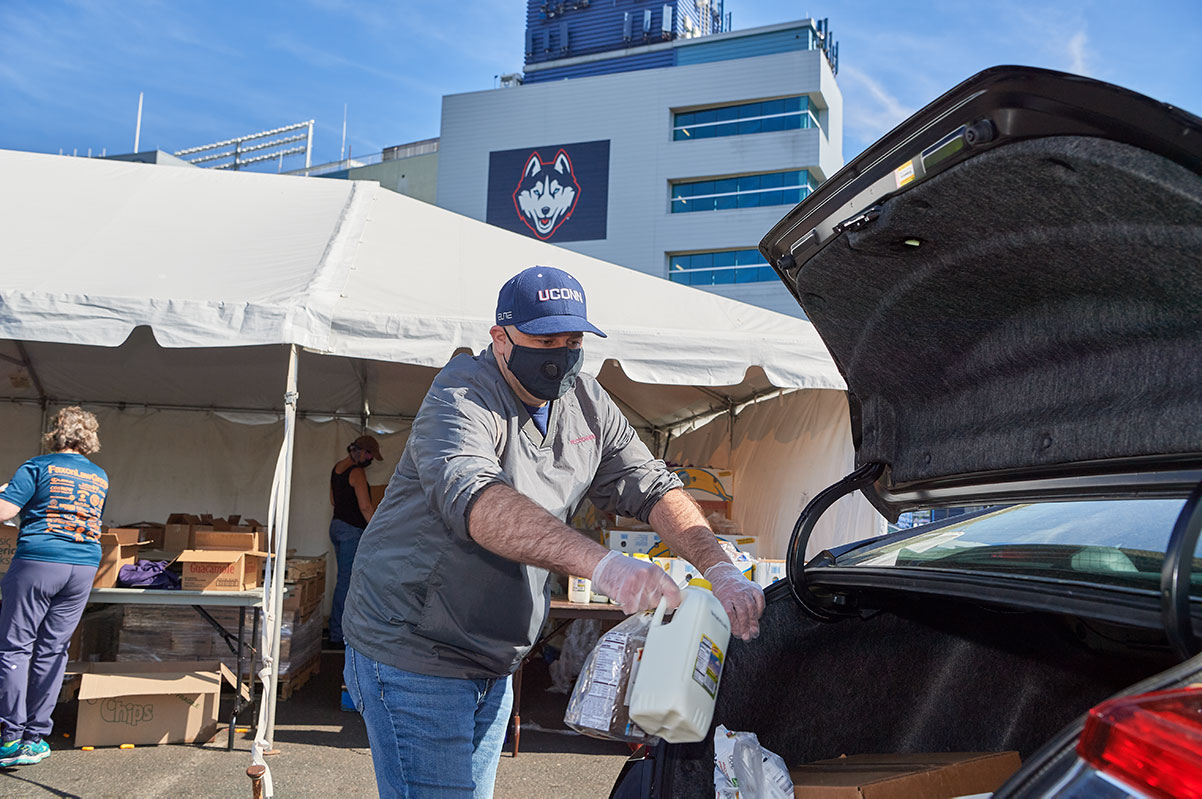
Jakubowski fills a trunk with donated food at Rentschler Field in May.
> Skyping for Science
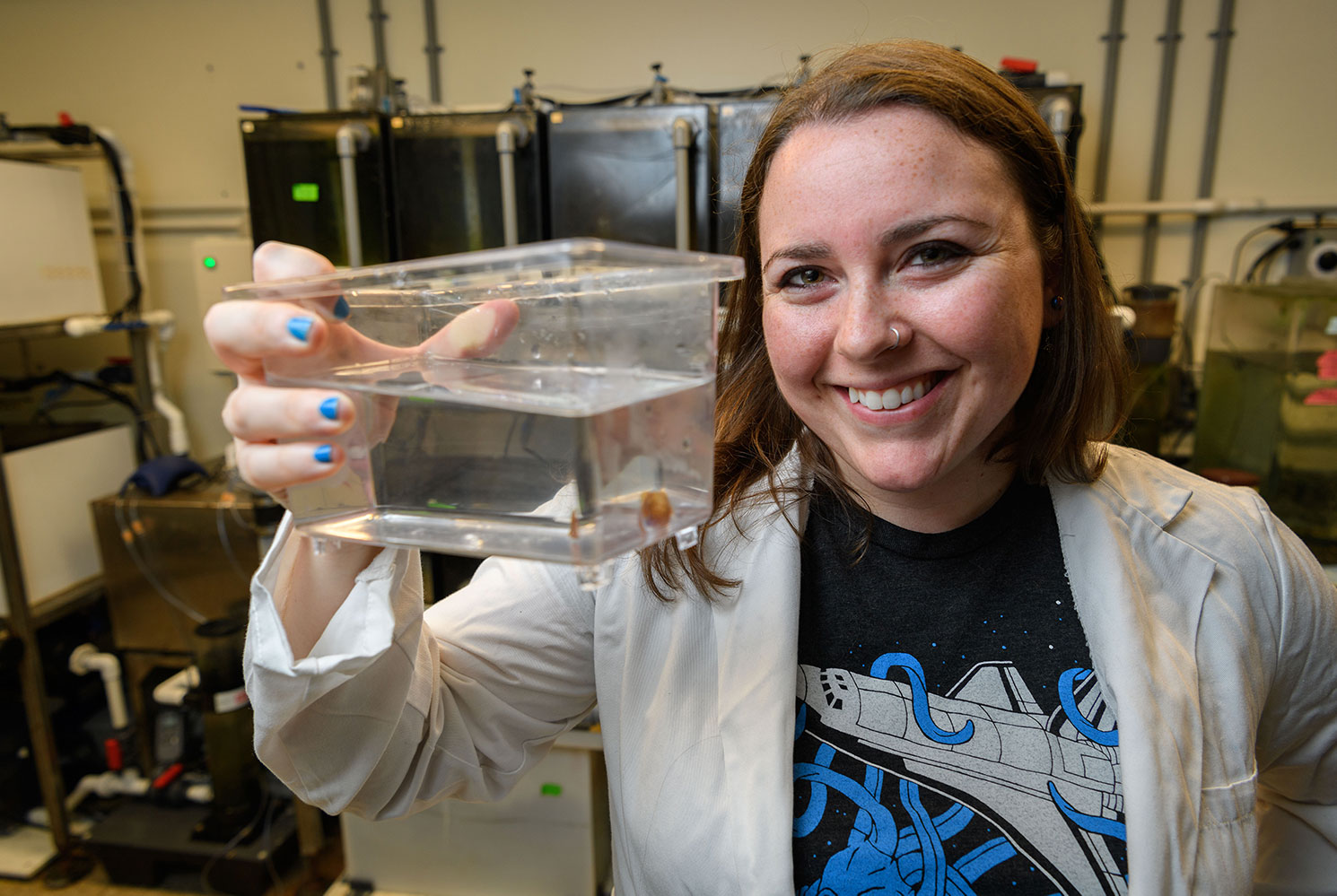
When schools worldwide were abruptly closed and parents everywhere scrambled to fill their children’s days with at least some meaningful activity, Sarah McAnulty ’19 Ph.D. was ready.
In mid-March, Skype a Scientist, the nonprofit organization McAnulty founded in 2017 to break down barriers between everyday people and scientists, shifted from its usual practice of matching scientists with classrooms via video call to bringing those scientists right into people’s living rooms.
“Our scientist roster has tripled in the last month because so many scientists are home, unable to do their experiments and looking for something positive to do,” McAnulty said in mid-April. “It’s totally awesome because it means we can reach a lot more people.” Indeed — in the month beginning March 15, nearly 3,000 signups came in from 47 countries.
“Today I set up @SkypeScientist for my kid, and let me say this was the coolest thing for us parents whose kids are missing school. 10/10 recommend!” Utah Twitter user @SNAFU_ Sara posted. Her 7-year-old son — whom she says is advanced in science and doesn’t always get the answers he’s looking for in school — talked about viruses with Laura Canaday, an immunologist pursuing a doctorate at the University of Cincinnati. He showed Canaday a detailed picture he had drawn of coronavirus, complete with labels.
It was the type of personal connection McAnulty envisioned when she started the project as a UConn graduate student.
“We’ve noticed in the last 10 to 15 years, there’s sort of this growing mistrust of science, right? You’ve got people doing juice cleanses instead of just eating fruits and vegetables,” says McAnulty, now an assistant research professor of molecular and cell biology. “As scientists, we need to build trust up with people.
“And I think a lot of times the first step there is just getting a chance to get face time with scientists and realizing that we’re real people and not how we’re depicted in movies and TV, which is often as socially awkward, sometimes evil, crazy-haired white guys.”
Skype a Scientist, which started with McAnulty reaching out to teachers on Facebook — “Would you like to have your class talk to a scientist?” — snowballed in popularity as word spread at conferences and in national press.
Since its founding, nearly 5,000 scientists have held 26,000 sessions, with participants from 70 countries and all 50 states.
The organization’s programming for broad audiences has also been in high demand while the world stays home.
“After Hours” adult science trivia nights have moved from local bars to Zoom. “Skype a Scientist Live” streams have ramped up from three times a month to four times a week, drawing up to 500 people apiece for such general interest topics as a deep dive into “wind” with London-based environmental scientist Dani Rabaiotti, co-author of “Does It Fart? The Definitive Field Guide to Animal Flatulence,” and an examination of “Everything Wrong with [Netflix hit documentary series] ‘Tiger King’” with conservation biologist Imogene Cancellare.
Though the topics, whether for adults or kids, are often light, the goal of showing children that they, too, can be scientists is vital, says McAnulty.
And the effort seems to be working.
“Just spent an hour speaking w/ an 11-year-old in Canada who found me @SkypeScientist of her own accord in order to ask me HOW TO BE A #DOCTOR. Had questions prepared,” tweeted Dr. Sheyna Gifford, a physician and aerospace medicine researcher. “Dear World: We might be saved after all. Happy Friday. :)” —Julie (Stagis) Bartucca ’10 (BUS, CLAS), ’19 MBA
> Half Full Brewery all in for responders and restaurant workers
As part of their “Together We Can” campaign owner Conor Horrigan ’11 MBA and the rest of the “hoptimists” at Half Full Brewery thanked health care workers and first responders by setting up a contactless drive-through giveaway of their brews — beer or the new Rise & Grind hard coffee. Volunteers, human and canine, helped with the handouts while also collecting personal protective equipment (PPE) donations. Half Full also is selling All Together IPA, proceeds from which go to the CT Restaurant Association for those in crisis due to Covid-19.
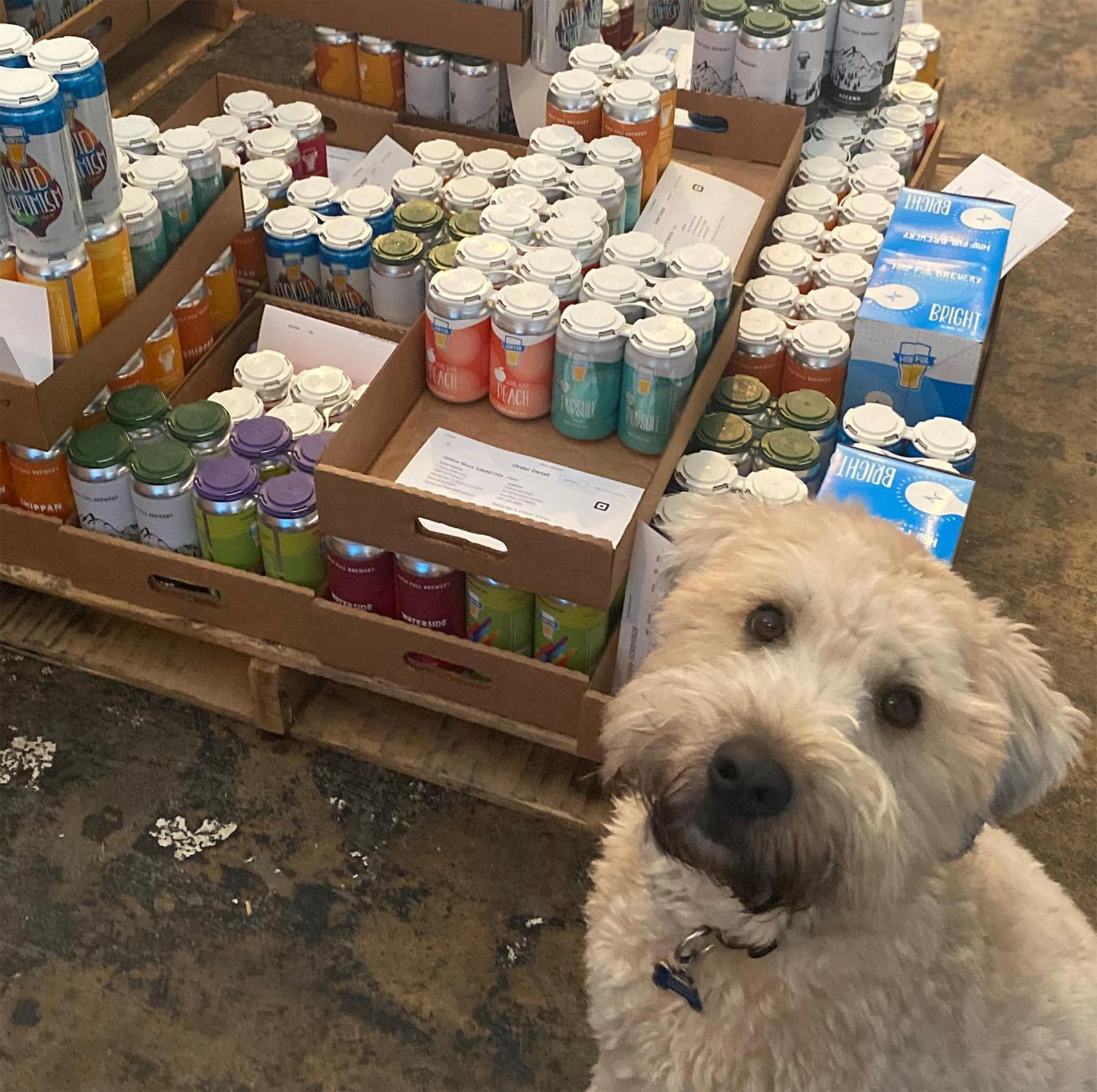
> UConn Nation Fighting Covid Through Innovation and Creativity
Students, staff, and alumni are battling this novel virus and coming together for their communities in myriad ways.
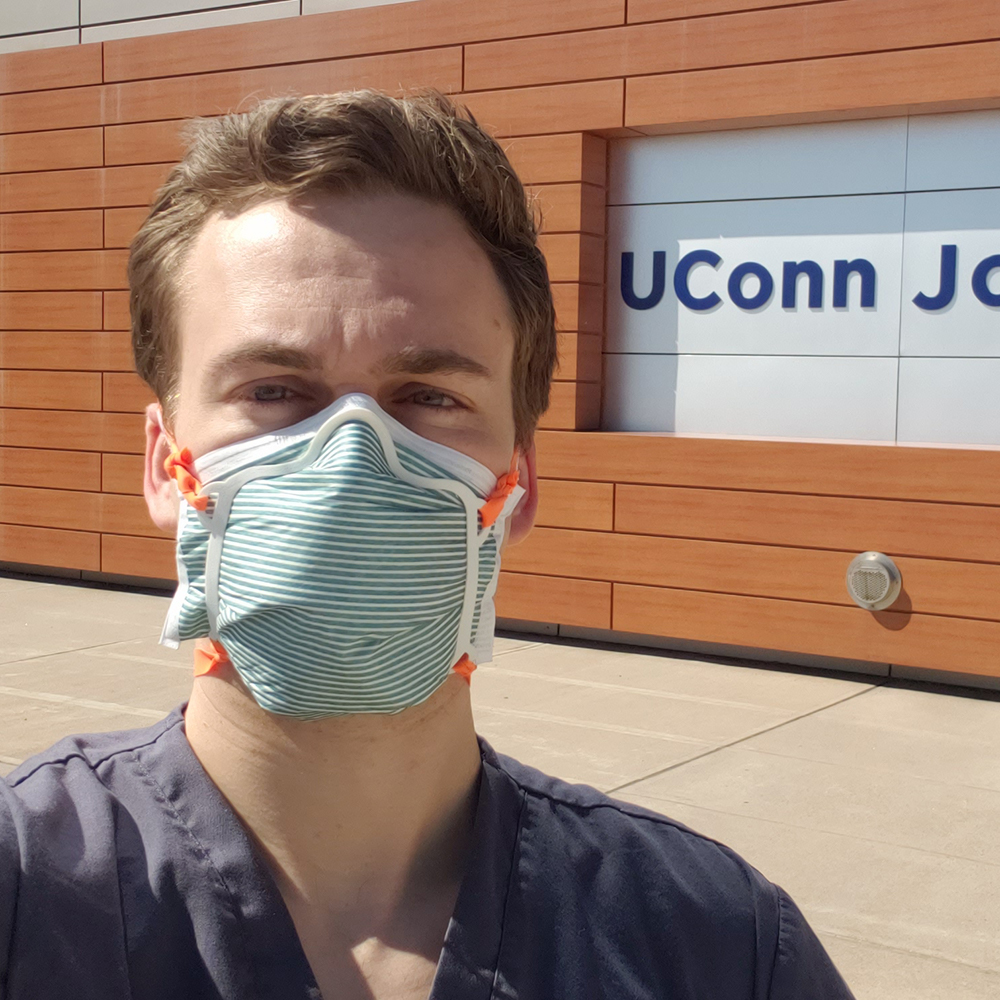
Dr. Chris Wiles wears the mask frame he designed and UConn scientists and engineers produced using 3-D laser cutters and printers. It improved the fit of 40,000 stored masks.

From top: Sahil Laul ’19 (CLAS), Sameer Laul ’15 (CLAS), and Aziz Sandhu ’19 (CLAS) collaborated over Zoom with Anupam Laul (not shown) to design and develop an app that could improve communications during future crises.
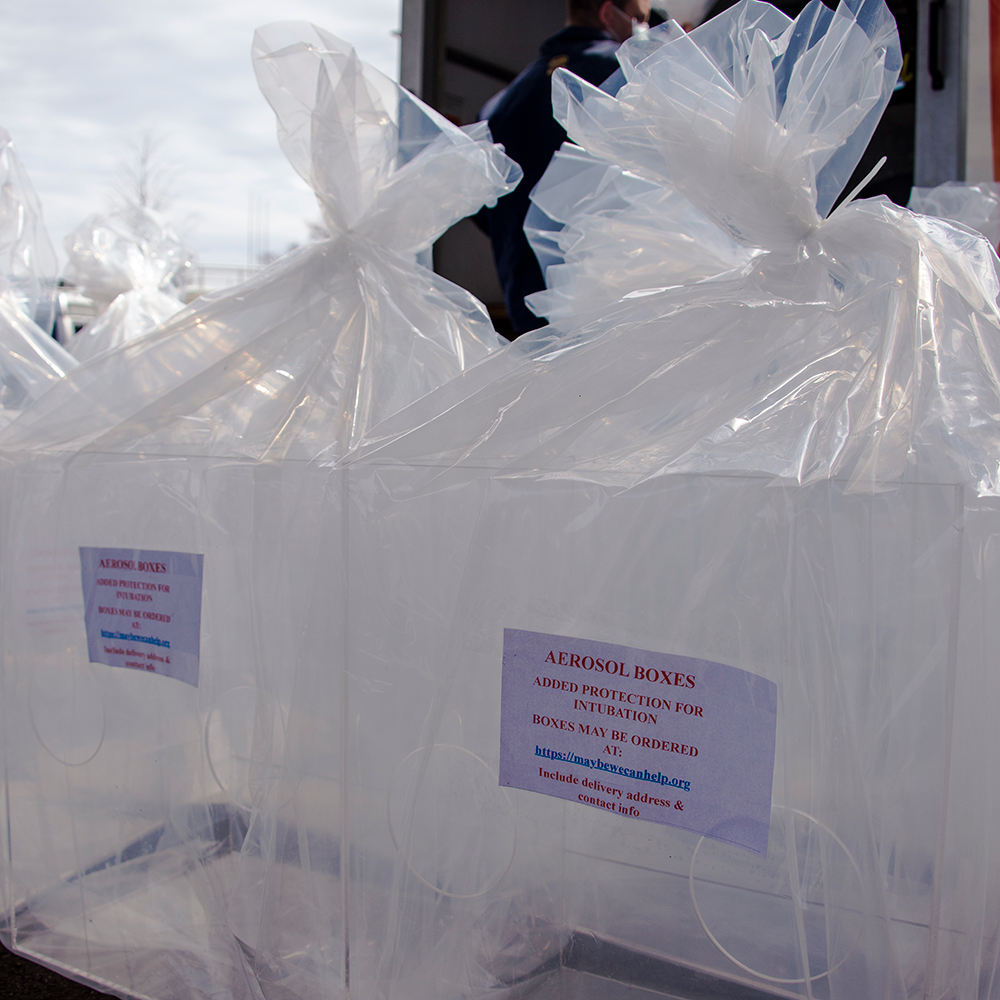
To minimize staff exposure to Covid-19, Emergency Department Chief Dr. Rob Fuller and ED Dr. Paul Kaloudis devised a protective enclosure. Intubation boxes also were manufactured and donated to hospitals by KVC Builders of Waltham, Massachusetts.
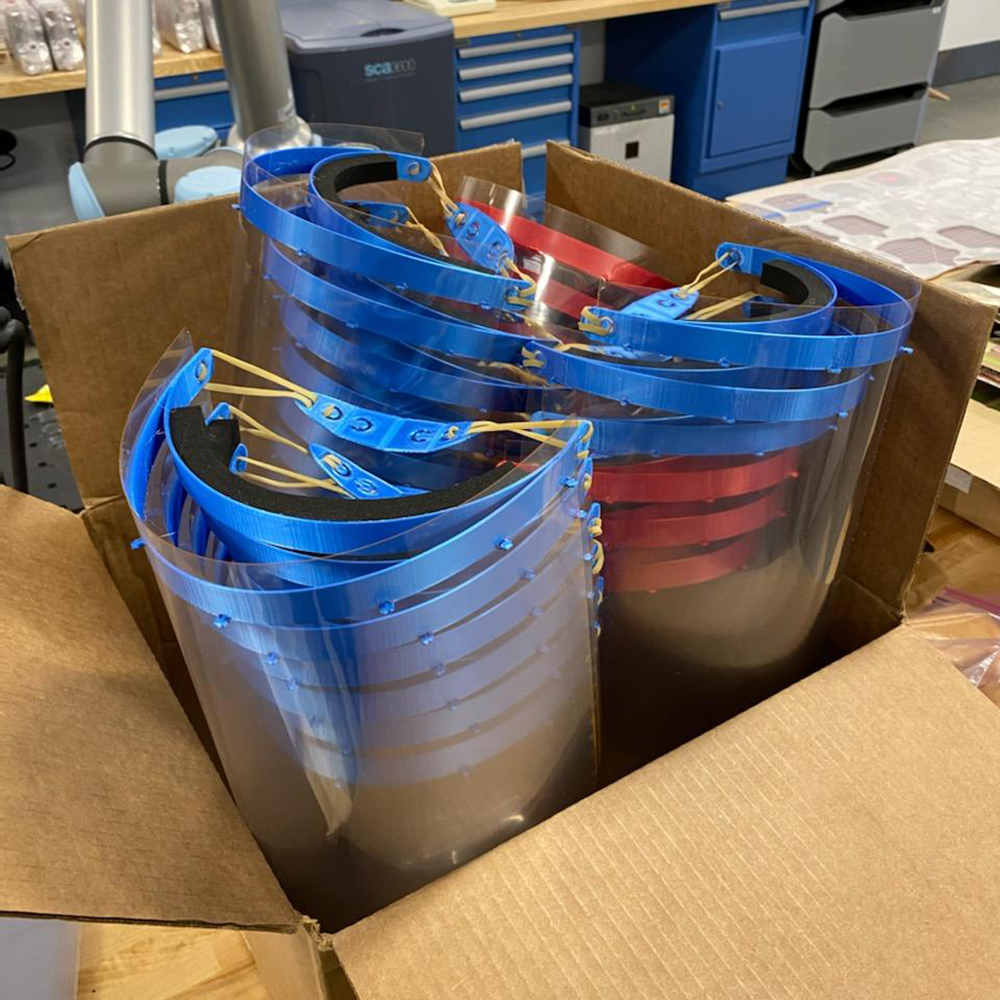
Joe Luciani and others at the Innovation Partnership Building worked with industry partners and other UConn departments to send hundreds of face shields each week to UConn Health.
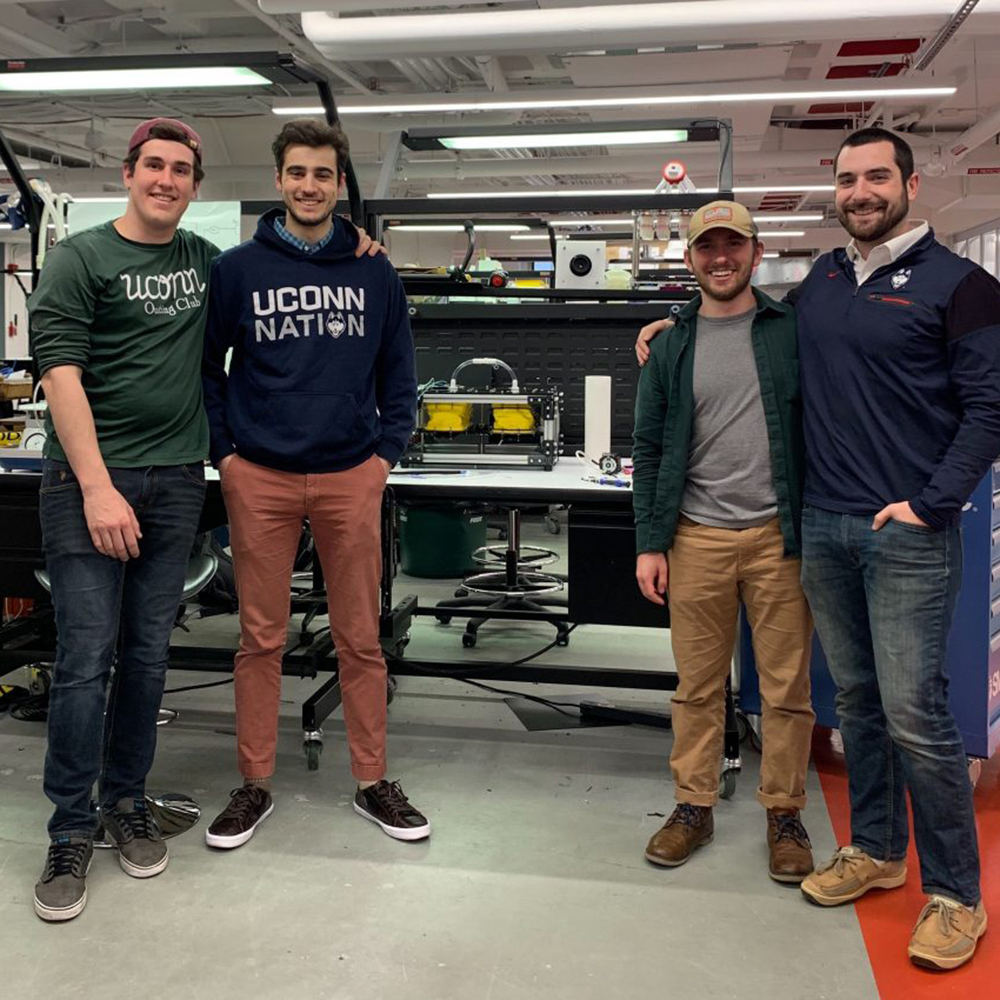
From left, Justin Schroeder ’20 (ENG), Noah Pacik-Nelson ’20 (ENG), Matt Grasso ’19 (ENG), and Mark Waldner ’19 (CLAS) worked to design and create an emergency ventilator.
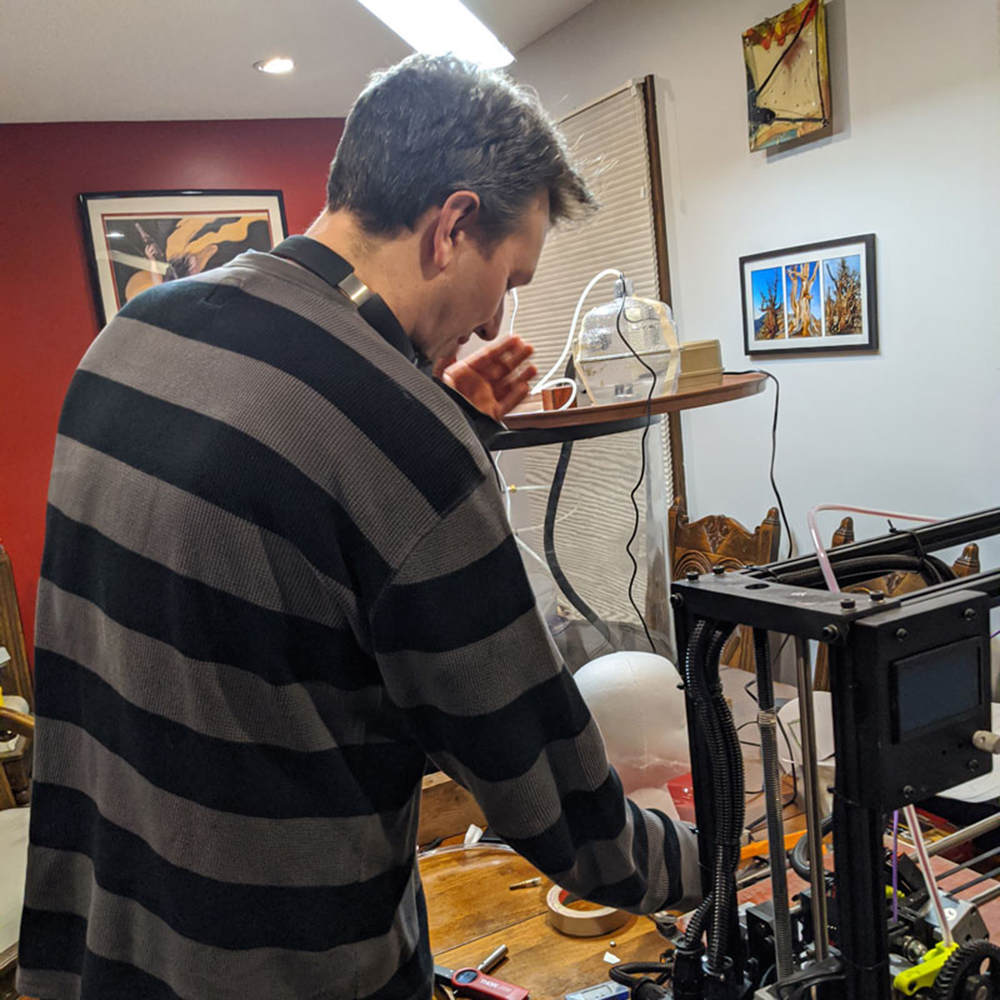
Days after campus shut down, physics professor Jason Hancock was working in his kitchen and living room using dummy heads from the medical simulation lab to create better masks.
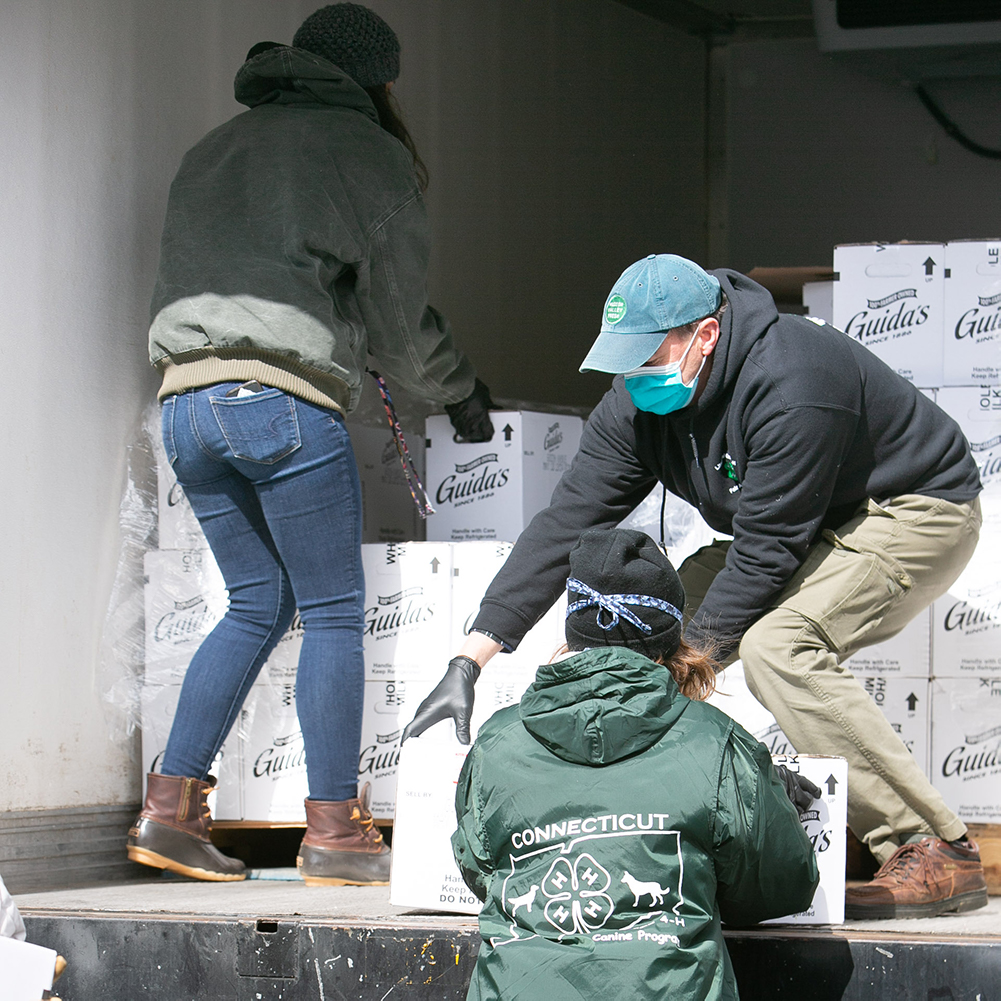
Bill Davenport ’85 (CAHNR), ’86 MS started Operation Community Impact, which reroutes surplus dairy products to more than 100 Connecticut food pantries.
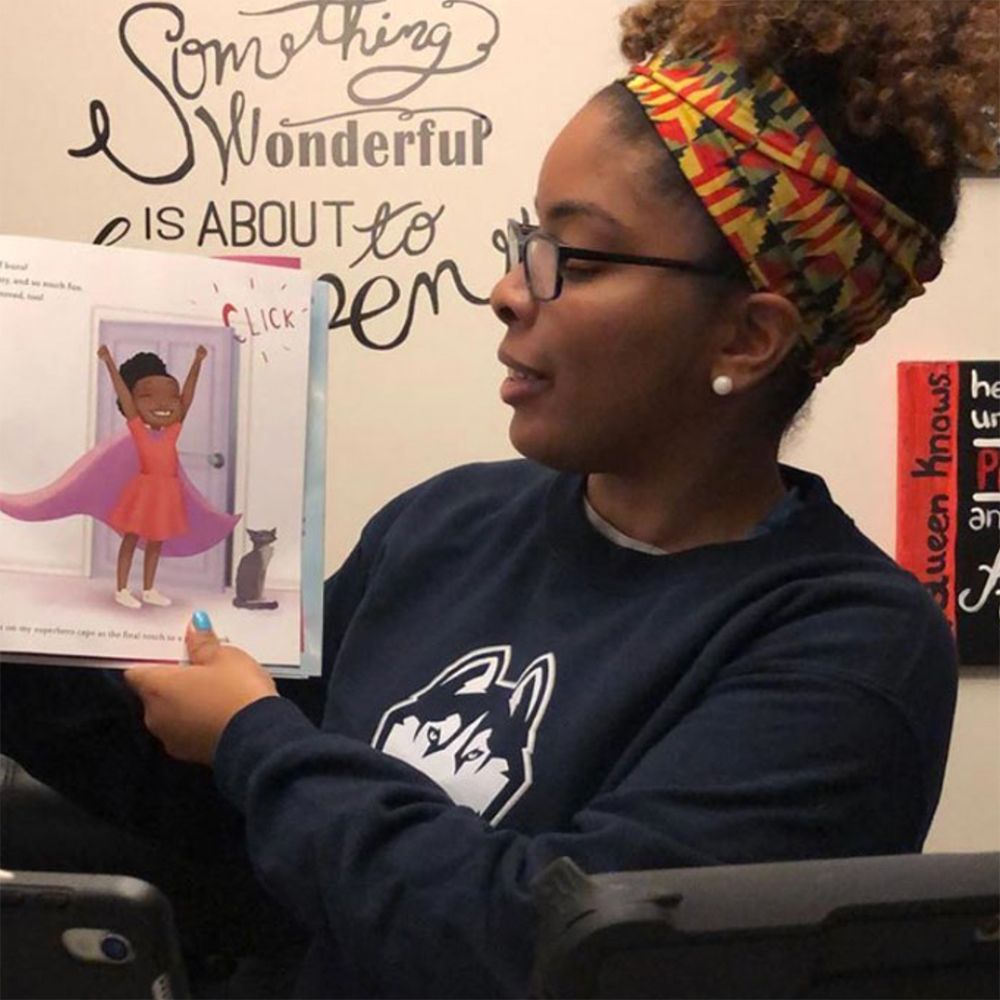
Tracey Lafayette ’15 (ED), ’16 MA records herself reading a story every day and shares the link with her third-grade students. “I am trying
> MSW candidate Kelly Ha ’19 (BGS) wants us to see Asians as mothers, fathers, CEOs, doctors, nurses, baristas, students . . .

Kelly Ha
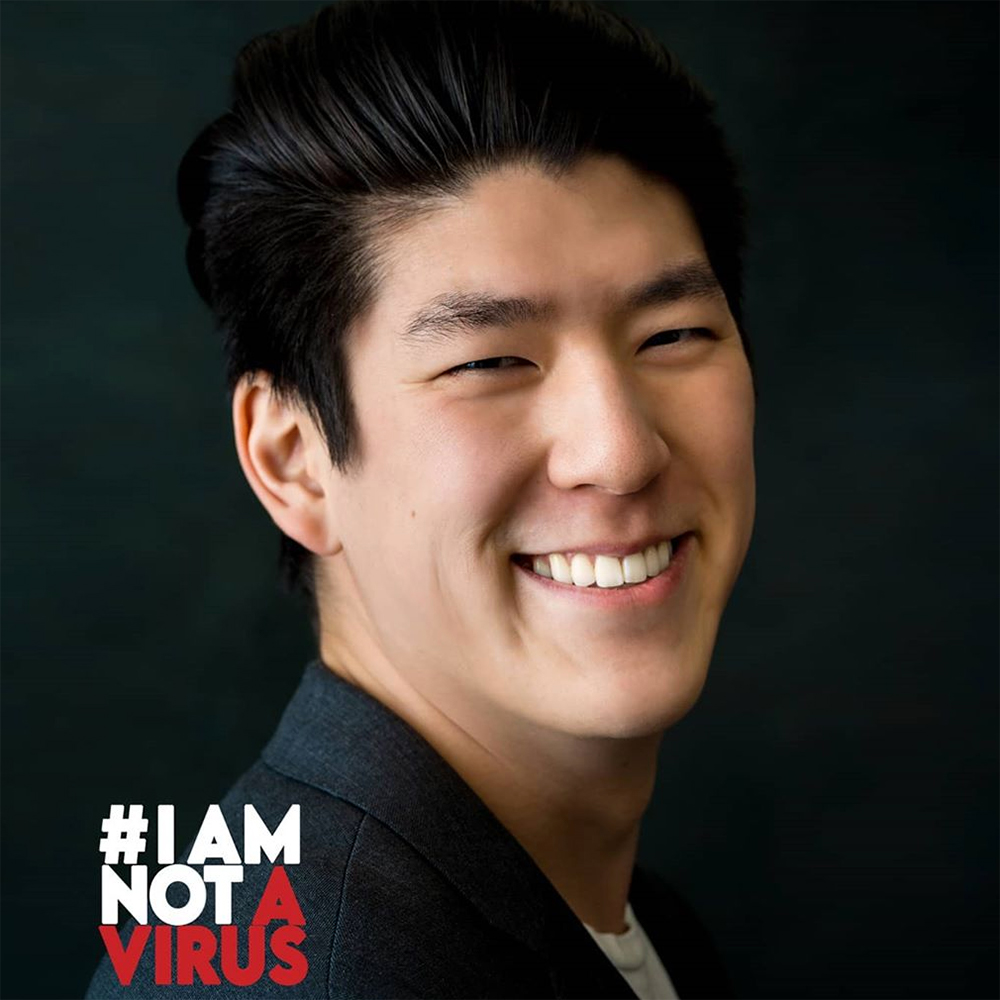
Jason Zhang
More than 30% of Americans have witnessed someone blaming Asian people for the Covid-19 pandemic, according to a recent national survey, and those incidents occur in a number of forms — from a sideways glance or a mask pulled tighter to the face to spitting, shouting, and bodily harm.
“My family members are constantly afraid to leave the house because they fear they’re going to be attacked,” says Kelly Ha, a Master of Social Work student from West Hartford (above left). “They’re afraid they’re going to be hit or they’re going to be verbally abused. My privilege is that I haven’t felt that yet. But this is happening, and I think it’s really important that we bring awareness to this.”
That’s why Ha decided to get involved in the new campaign #IAMNOTAVIRUS. Created in response to growing reports and outright displays of anti-Asian rhetoric and behavior around Covid-19, #IAMNOTAVIRUS started as a portrait project — founded by West Hartford photographer Mike Keo — that sought to portray Asian Americans as the neighbors, community members, and business owners that they are. Each portrait is accompanied by a three-item “I Am” statement describing who the person is, in their own view, beyond their race or ethnicity.
“The statements are about who you are as a relatable person in the community, to stop the dehumanization of the Asian community as just being a virus,” Ha says. “So, for me, my three ‘I Ams’ are that I am a Master of Social Work student, I am a mental health advocate, and I am a health care worker.”
Ha sat for a portrait early on in the campaign, before social distancing and stay-at-home measures took effect, but she didn’t want to just be an image in the campaign. Part of a long history of political social work organizers, she wanted to do more. She joined the campaign as its outreach coordinator and is now campaign manager. Recently the social work student has been working mental health advocacy and outreach into the campaign’s mission.
—Jaclyn Severance
Husky blue hearts popped up everywhere to specifically honor the staff at UConn John Dempsey Hospital and all our UConn Health heroes.
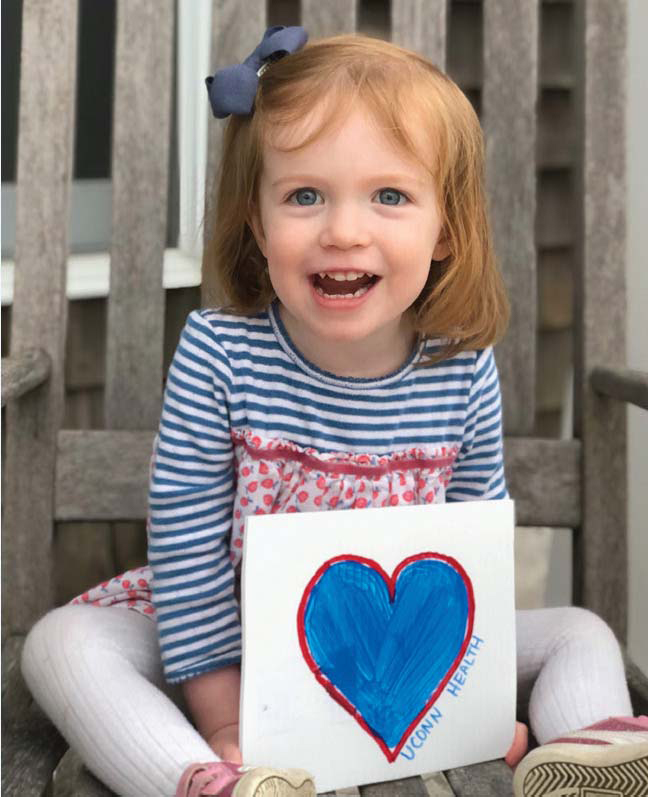
> A two-week-long, multidisciplinary, one-credit online course titled “The Covid-19 Pandemic: Impacts on Health, Business, and Society” reached an enrollment of more than 4,000 students — easily the largest class in UConn history.
> “I wasn’t ready to leave UConn forever”
— Sarah Negron ’20 (CLAS)
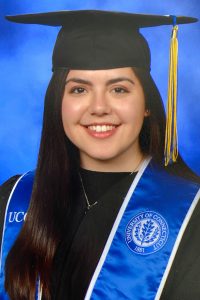 I knew the Covid-19 situation was bad, but I never would have thought it would take away the last two months of my senior year.
I knew the Covid-19 situation was bad, but I never would have thought it would take away the last two months of my senior year.
I left for spring break with every intention of returning three weeks later, according to the most recent email at the time from President Katsouleas. I locked the door to my dorm room, hugged my friends goodbye, and said, “Stay safe and I’ll see you soon.” Little did I know that was the last night I would ever spend in my dorm room with friends that I may never see again.
Four days into spring break, I received an email from President Katsouleas that read, “Coursework at UConn will continue to be delivered online for the remainder of the spring 2020 semester, including final exams, and I am sorry to say that there will be no May commencement exercises this year.” My heart sank to the pit of my stomach.
I immediately sent a screenshot of the email to my friends. The group chat rang out in crying emojis and statements of complete shock. “What about all of our stuff still in our dorm? They can’t have thousands of students return all at the same time to get our things. Are we going to get refunds for housing and meal plans? What about the international students or students that don’t have homes to return to?”
My professors were frantically sending emails saying they weren’t sure how their classes were going to proceed. A majority of my classes were built around in-class participation and group projects. Many of them said they wouldn’t be holding virtual lectures during normal class hours because they now have to homeschool their young children. They would create PowerPoint slides.
As I click play on lecture after lecture, I’m having trouble focusing. I can only think about how my immediate future has changed so drastically in such a short amount of time, and all of my last moments at UConn that I was looking forward to and will never get to have.

Sarah Negron worked at UConn Magazine the past two semesters. We were lucky to have her and luckier that she shared these thoughts during the first few days of pandemic reality. In June, Negron started a job as talent assistant at Chloe Productions — it’s WFH for now. She hopes to hug her friends tightly at a non-virtual grad party in August.
I had been applying for jobs to begin immediately after commencement in May, but now that most people have to work from home and companies are laying off many of their employees, who knows when they’ll be looking to hire new employees again? The economy is going to suffer for a long time due to this pandemic, which means the job hunt for the Class of 2020 will, too.
I wasn’t ready to leave UConn forever. I wanted to cherish the last night in my dorm room, the last time I’d have dinner with my friends in the dining hall, and the last time I’d walk across campus with the “UConn Senior” button pinned to my backpack. I did all of those things for the last time, except I didn’t know it would be the last time.
The worst part is when I vocalize my disappointment and the people around me reply, “You’re still going to get your diploma. They’ll reschedule commencement. You’ll see your friends again. It’s not the end of the world.”
It may not be the end of the world, but it’s the end of my world at UConn. I know I’ll graduate, find a job, and see my friends again, but if I knew that the day I left for spring break was my last as a UConn senior, I would have breathed the air in a little deeper, looked around a little longer, laughed a little harder, and hugged my friends a little tighter.
> Less Pomp, More Circumstance
The Class of 2020 diplomas were real, but for the first time UConn commencement was virtual. Leading up to the ceremony’s broadcast from Jorgensen on May 9, some traditions remained (mowing the graduation year into the Horsebarn Hill grass), some were tweaked (posing at the statue alone or in socially distanced groups), and some were new (UConn graduation in Minecraft). President Thomas Katsouleas’s remarks streamed live on UConn’s YouTube channel as he introduced taped speeches from Gov. Ned Lamont; Wawa Gatheru ’20 (CAHNR), our first Rhodes Scholar; Jamie Gooch ’11 MS, ’19 DNP, a nurse and nursing professor; and Geno Auriemma, before Board of Trustees Chairman Daniel Toscano ’87 (BUS) conferred nearly 9,000 degrees. “Each generation has a defining moment . . . Now, this is your time. This will define your generation. This is you now,” said Auriemma.
“You are living in uncomfortable times, so in some sense you are living in the greatest time of your life. It’s great to be uncomfortable because that’s when you find out just how great you can really be.”— Geno Auriemma
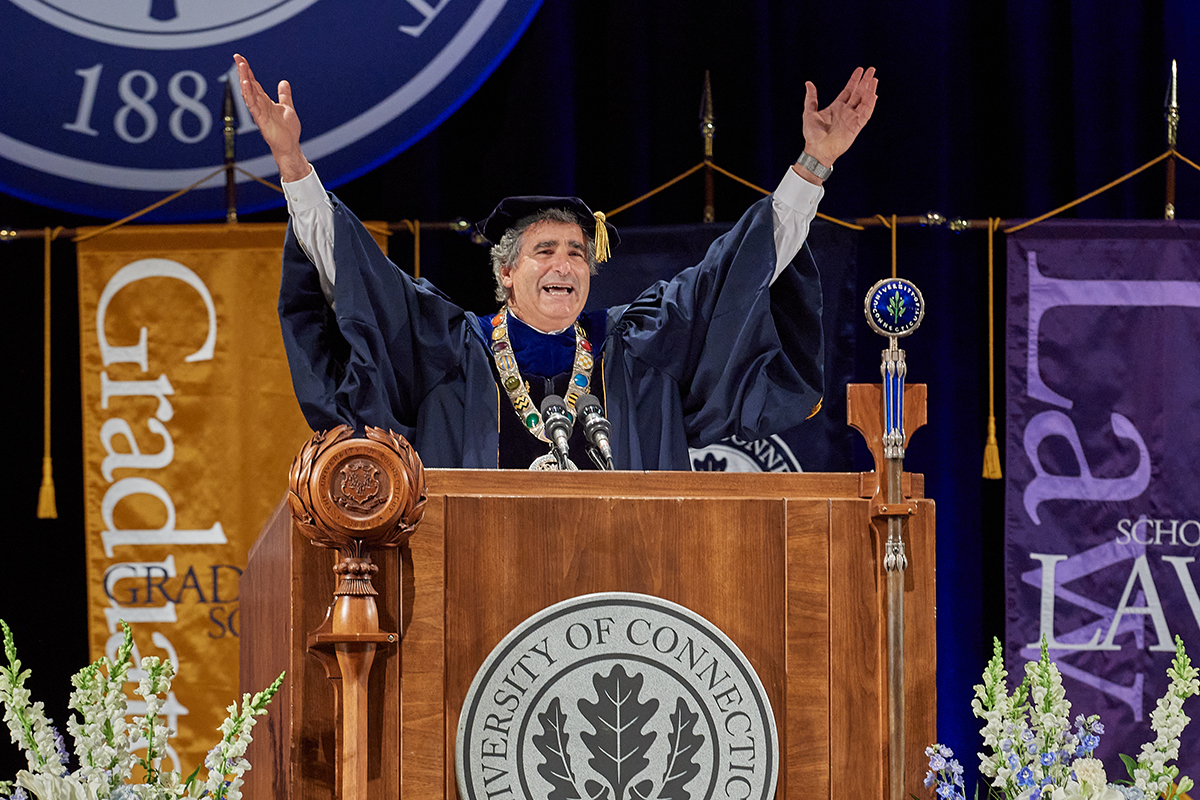
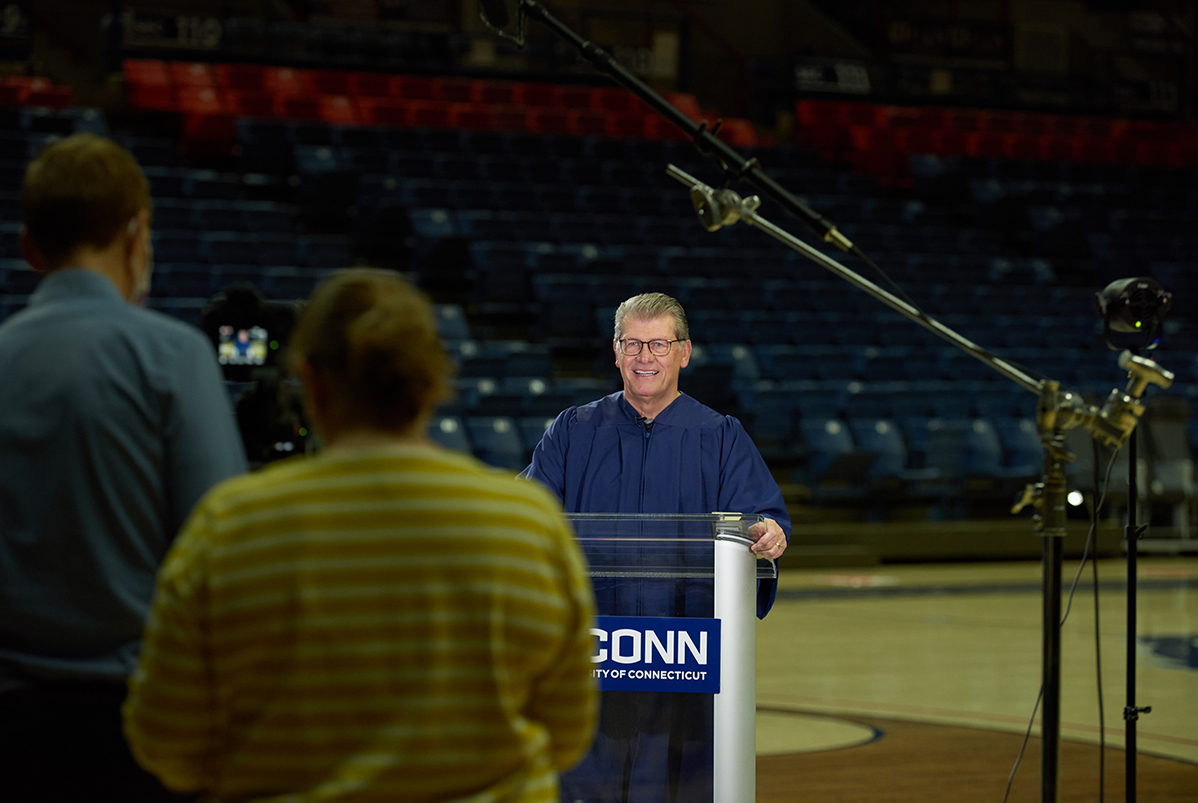
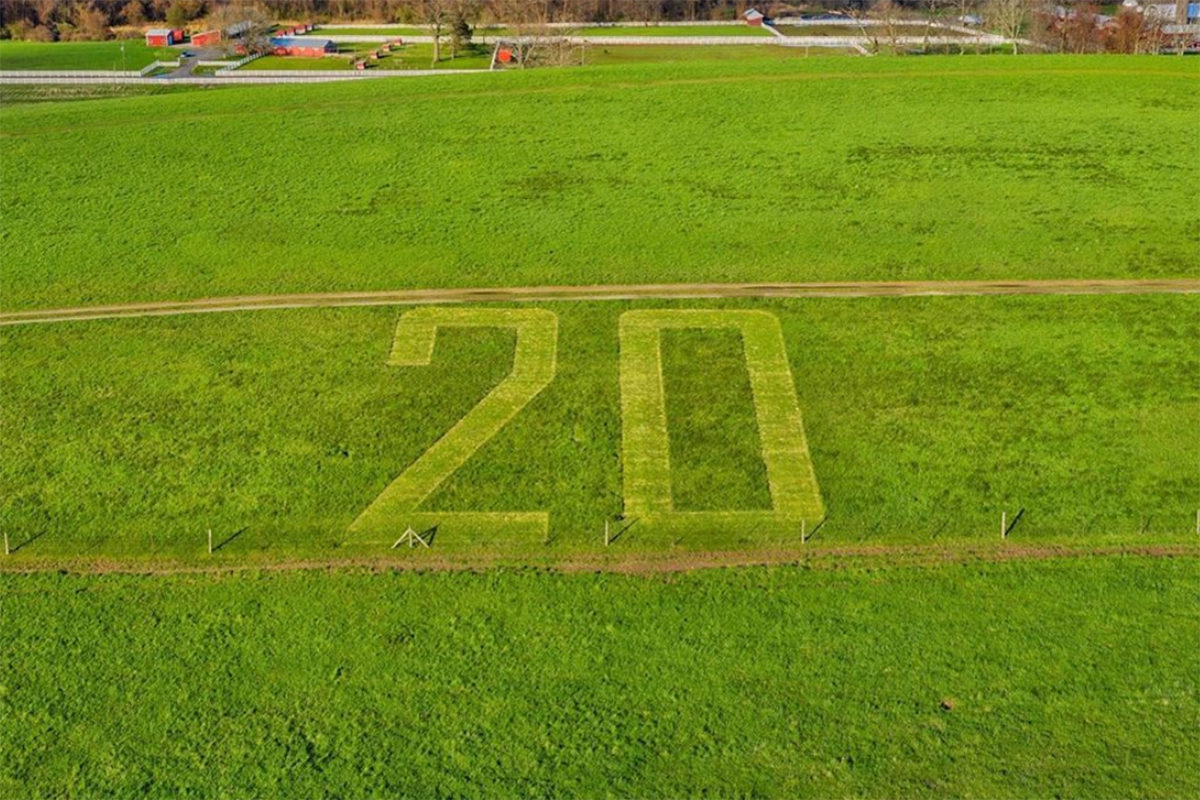
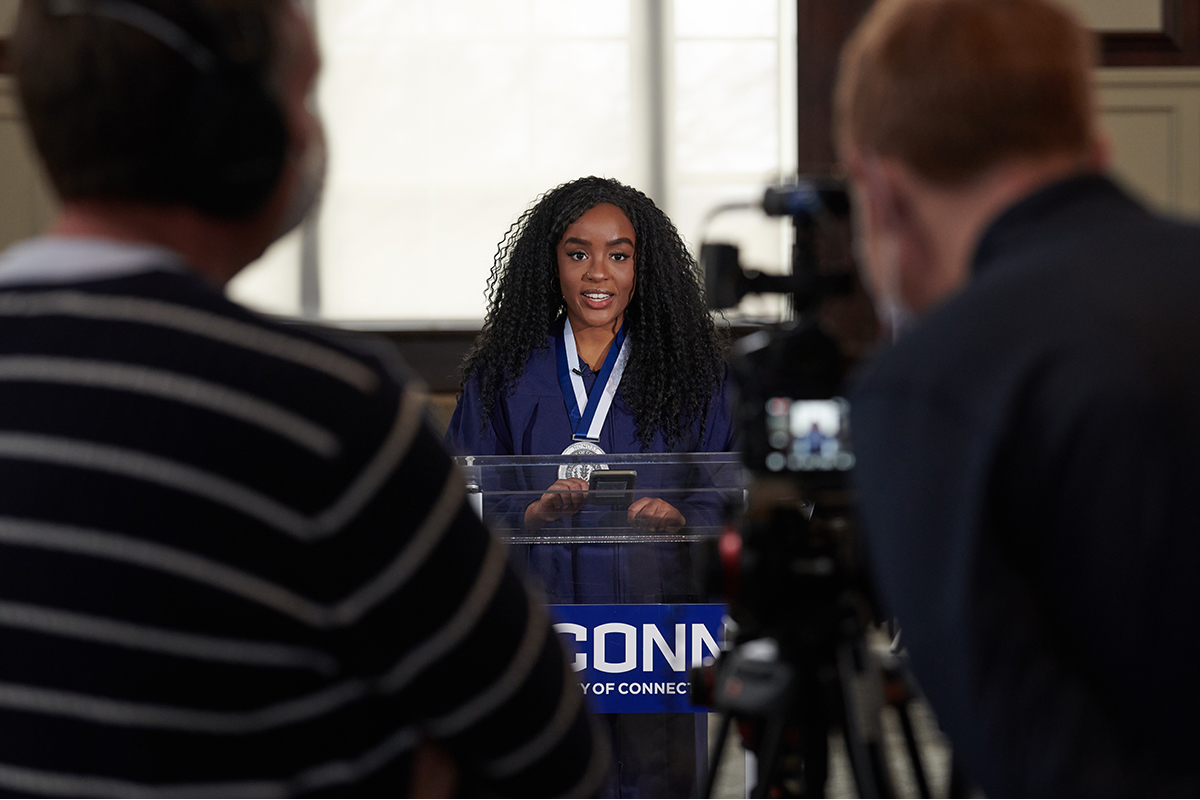

> Mobile Testing of a Different Flavor
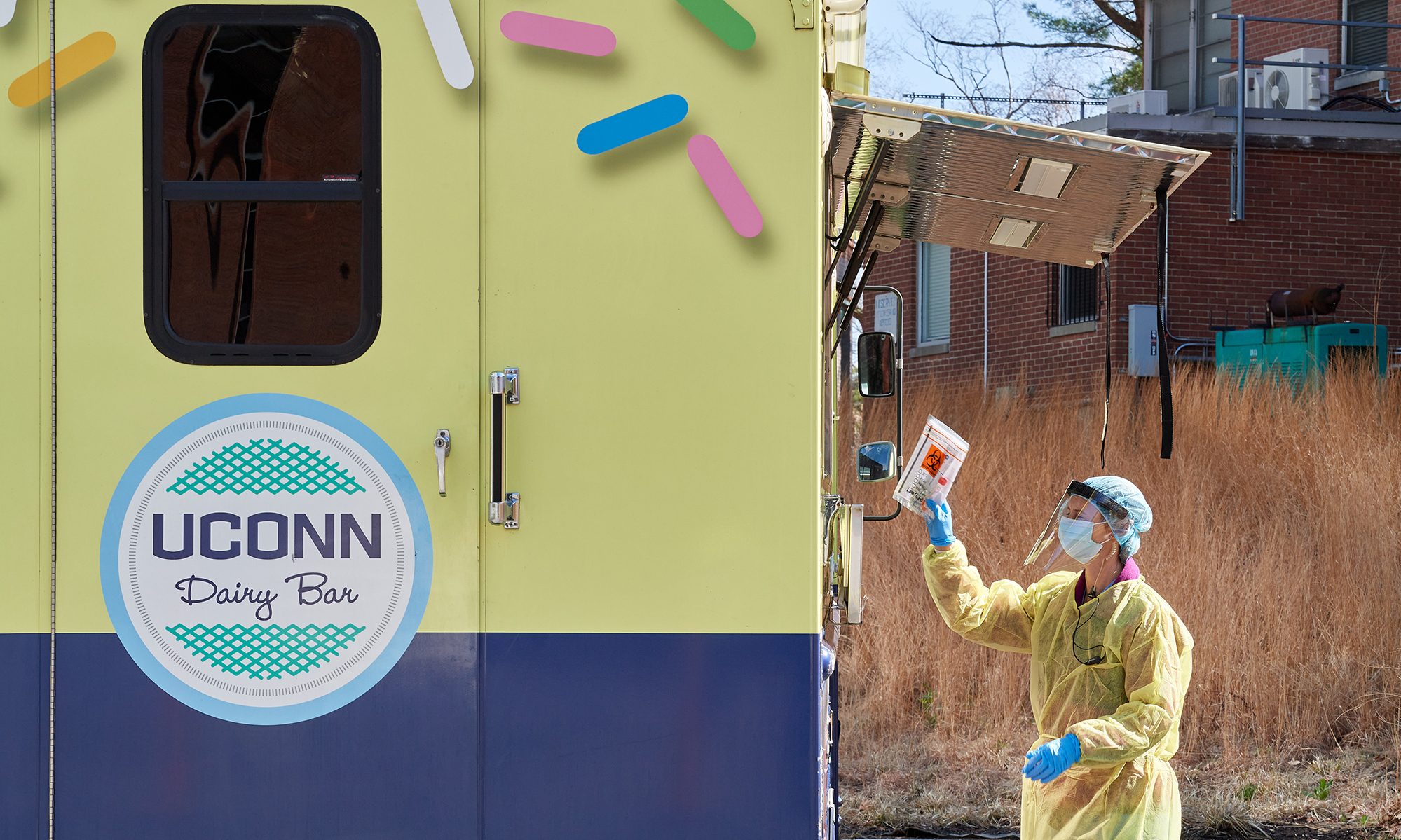
Beth Schweitzer ’98 MD takes a sample kit from the UConn Dairy Bar truck, which was pressed into service for walk-up and drive-through Covid-19 testing outside the Hilda May Williams Student Health Services Building on Glenbrook Road on April 14.
Student Health and Wellness (SHAW) wanted a familiar and friendly place for students to be tested on the Storrs campus. And what’s more familiar or friendly to students than the Dairy Bar?
Students started with telehealth appointments and, if tested, received face masks and self-isolation instructions.
“Our SHAW staff, like all health care professionals, have been on the front line of Covid-19 right from the beginning and are performing with great skill and selflessness,” says Eleanor Daugherty, associate vice president for student affairs.
Thanking UConn Dining Services for the use of the Dairy Bar truck, Daugherty said, “I can’t wait until it is back for its intended use!
> Staying in Storrs
Coronavirus restrictions and dangers have kept the Chen sisters from going home to Guiyang, China. They fear if they do get home, they won’t be able to get back to UConn to finish their studies, research, and internships. Xingru Chen ’21 (CLAS) studies psychology and HDFS and hopes to work in mental health, “something we need to focus on more and care about more,” she says. Xingyi Chen ’21 (BUS) is a finance major and co-founder of the UConn Mental Health Coalition, work she feels is especially important now. “At this challenging time, we need to be together no matter what kind of platform. I FaceTime with friends and colleagues to cheer each other up. Summer is coming, and everything will be better — we can make that happen.”

Xingyi (left) and Xingru Chen on campus in early May
> Finding a Better Way — and Getting PPE to Millions
When entrepreneur Nadav Ullman ’12 (BUS) heard that schoolchildren had been asked to make cloth medical masks for health care workers treating Covid-19 patients, he knew he had to act.
“This seemed like something you’d hear about in a Third World country,’’ Ullman says. “I initially thought, ‘How could this happen?’ and my next thought was, ‘Who is going to do something about it?’’’
In less than a month, Ullman and six other entrepreneurs — experts in everything from tech to health care to government, and most of them strangers to each other —banded together to create Project N95, a national medical-equipment clearinghouse.
“This seemed like something you’d hear about in a Third World Country,” says Ullman. “How could this happen? Who is going to do something about it?”
What Ullman and Project N95’s team discovered was that there were manufacturers worldwide who could alleviate the personal protective equipment (PPE) shortage, but the supply chain had broken down. The complex problem required myriad solutions, but to date they’ve helped 6,800 U.S. hospitals and health care centers source 252 million units of PPE. Their success has been touted everywhere from Forbes and Bloomberg to CNBC and The New York Times.
“We are, essentially, a rapid-response team, sourcing medical equipment at a time when it is extraordinarily difficult to find. We will keep it going for as long as it takes,’’ Ullman says. “While I wish this service had never been needed, I’m glad that this project is bringing tremendous benefit to the health care community.” —Claire Hall
> “Drugs like hydroxychloroquine bought over the internet from non-registered pharmacies are likely counterfeit, and not only will they not help you, they could have harmful chemicals in them that could hurt you.”—Pharmacy professor C. Michael White
> Going Viral in the Time of Covid-19
On March 9, sitting in my hotel room after a long day observing and interviewing teachers, principals, and coaches for a research project on teacher leadership and school improvement out of state, I opened two emails that would change my life for the foreseeable future. The first was from UConn’s provost stating the new travel restrictions due to Covid-19. Faculty were no longer to travel for data collection and the university was moving online. The second, from my children’s school district, indicated that due to a teacher’s spouse testing positive for Covid, schools would close for two days for a “deep clean.”
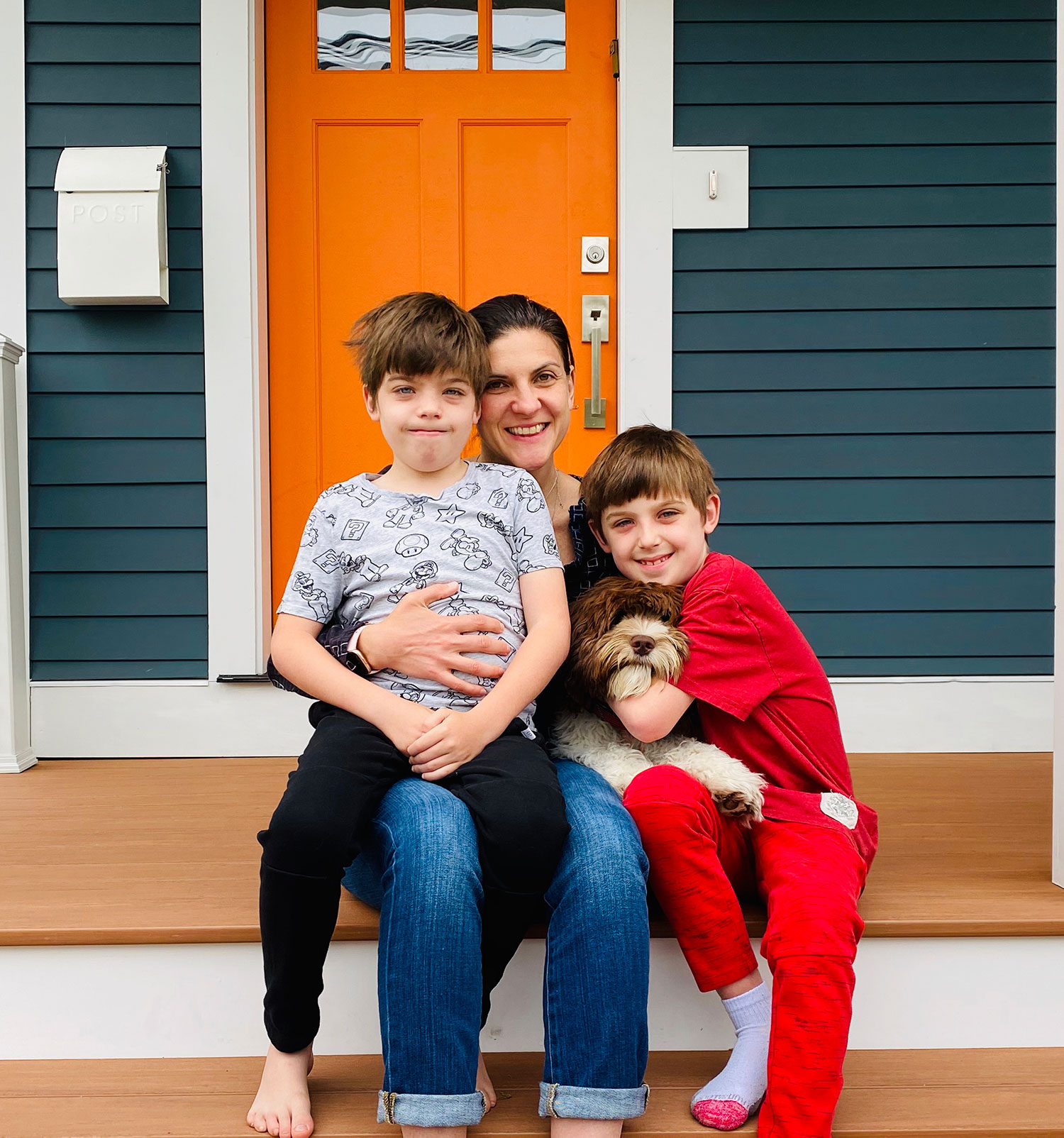
Jennie Weiner, associate professor of educational leadership in the Neag School, at home with her 8-year-old twins Manny and Rufus and their dog Junior.
By the time I had made it to the airport and paid an exorbitant amount of money to get on the next flight home, those two days had turned into two months — working from home and homeschooling were our new normal.
Freaked out and concerned for all the other working parents and educators trying to simultaneously be the best teachers, workers, caregivers, therapists, parent wranglers, and providers — I posted the following tweet:
I’m just going to say this and judge me all you want. We are not planning anything educational for our kids. Homeschool will not happen. We will survive and watch too much tv. We will eat cookies and carbs and hope for the best. We will love and try not to go insane.
To my surprise, the tweet went viral and led to my writing an op-ed in The New York Times entitled “I Refuse to Run a Coronavirus Home School.” Since then, in addition to trying to keep my sanity, I have appeared on shows from “Good Morning America” to “Central Time” on Wisconsin Public Radio, spreading the message to parents that all we can do right now is our best and that’s enough. That we need to have self-compassion because it’s going to be messy, and to remember that educators, too, need our support and compassion as they attempt to be superhuman so we can feel a bit more human.
This experience of going viral has also taught me some important life lessons I hope to carry forward post-pandemic.
Take the Risk:
At every juncture in this journey after my initial tweet, I was asked to do something that felt incredibly risky personally and professionally. Why did someone want to hear from me? Would it be good enough? Would I sound like a fool? Would I potentially offend or embarrass people I care about? Would my TV appearance prove that I have a face for radio? Despite these fears, I went for it (with the love and support of my incredible spouse and many people I trust), and the result was far more positive than negative. I have met so many wonderful people as a result of taking these risks, and I have grown so much, while maybe (I hope) helping a few people feel less alone along the way. The risk was more than worth it and made me bolder and more ready for whatever the future brings.
Tell Your Truth:
My research often focuses on how educators come to understand and experience their roles, including some of the challenges and rewards they incur while doing so. This means a lot of my time is dedicated to interviewing people and hearing their stories. However, even though so much of my work is dedicated to storytelling, I never really thought about telling my own. Moreover, if anyone had said my story would touch a nerve, I would never have believed them. What this experience reinforced for me is that everyone’s story matters — even mine. It matters because in telling our truths we let people know they are not alone, that each of us is part of a “we” and not just a “me.” This sense of connection makes us stronger and more able to persist when it is most needed (i.e., now).
The world will begin hearing more from me, and I hope from you, in the future.
Don’t Read the Comments:
When I said yes to The New York Times and wrote the op-ed, my husband made me promise I would not read the comments section. It was the best decision he ever made for me. While my inbox was flooded with people writing to me directly — sometimes positively and sometimes less so — it kept me away from the trolls and/or those with perhaps more knee-jerk reactions to my piece. Instead, I heard from thoughtful folks who often provided helpful critiques that made me think more deeply about current conversations and the world.
This process made me realize that, while anyone should be able to say what they want, you can pick and choose who you listen to and why.
I hope by the time you read these thoughts, the worst has passed and we are working together to heal, while planning for a “normal” that is better and more just. In the meantime, however, I will end the way I sign my emails now — stay safe, stay sane, and sending all the virtual hugs and good cheer possible. —Jennie Weiner
Photos by Peter Morenus or provided by subject

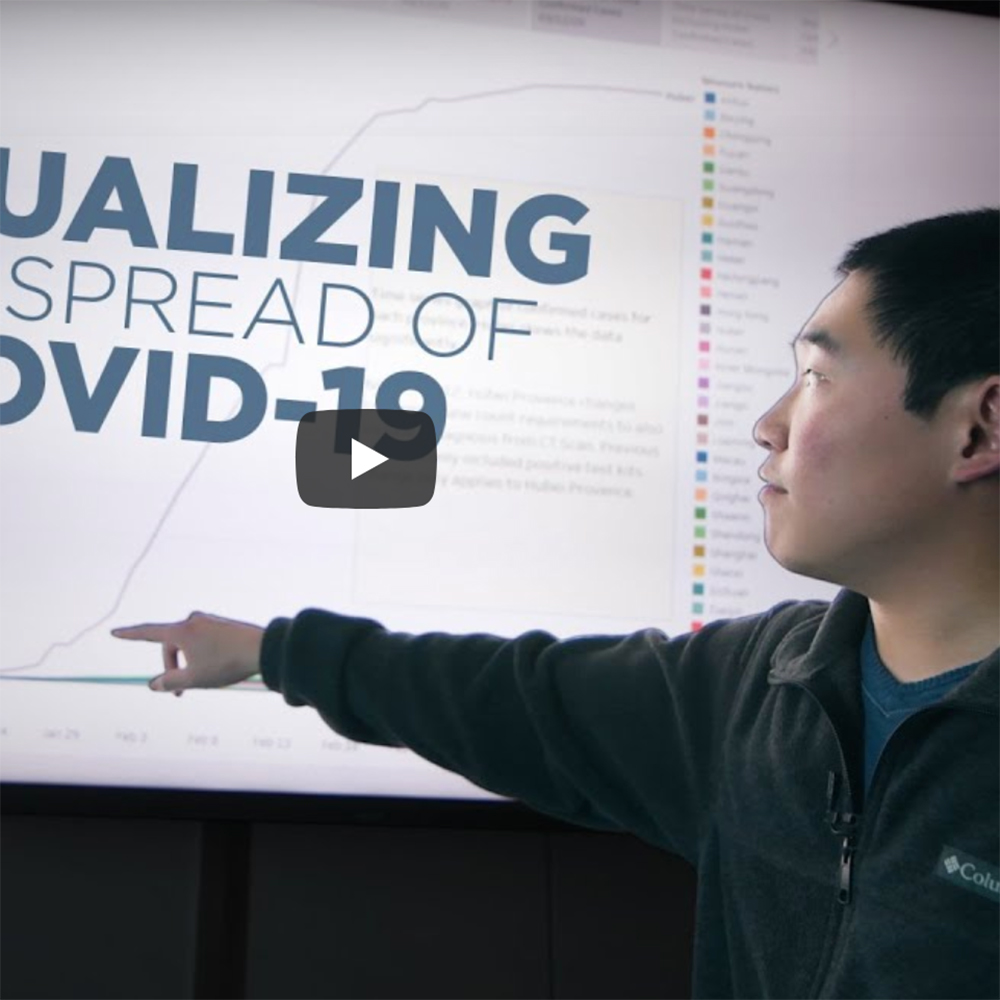
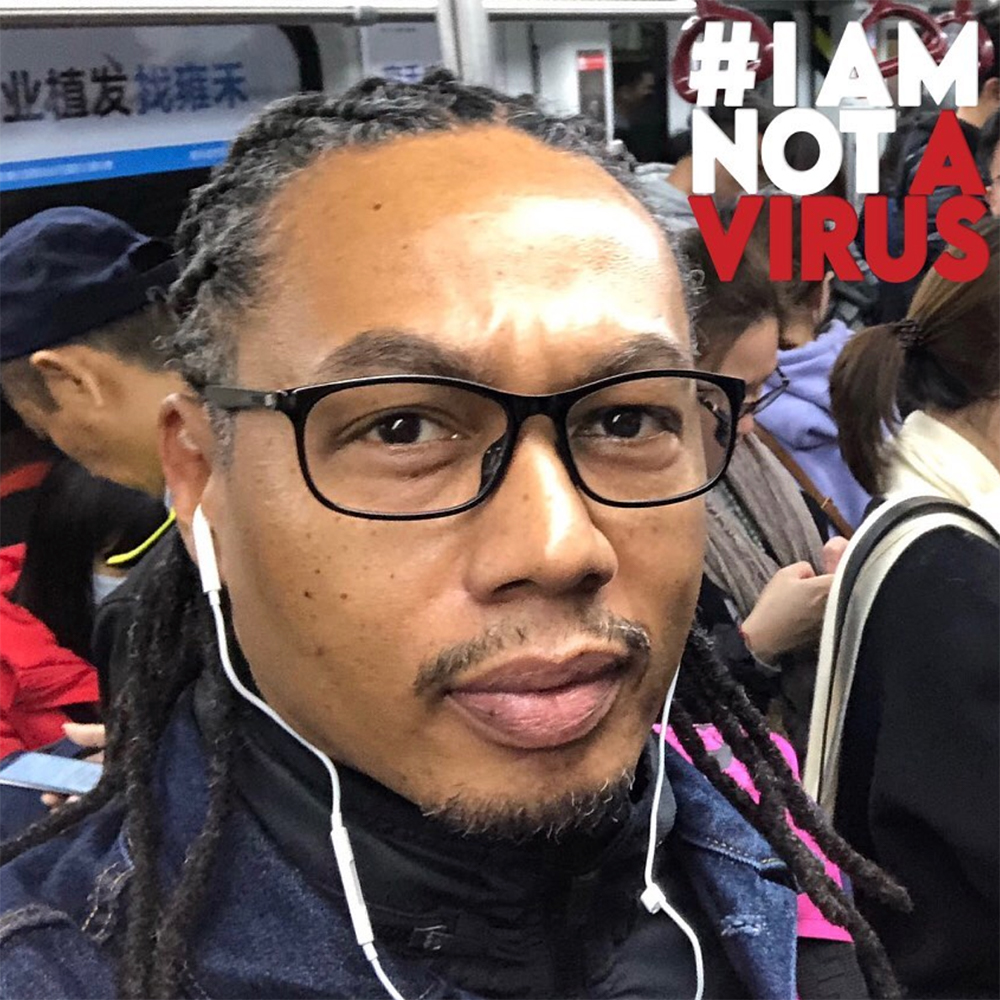
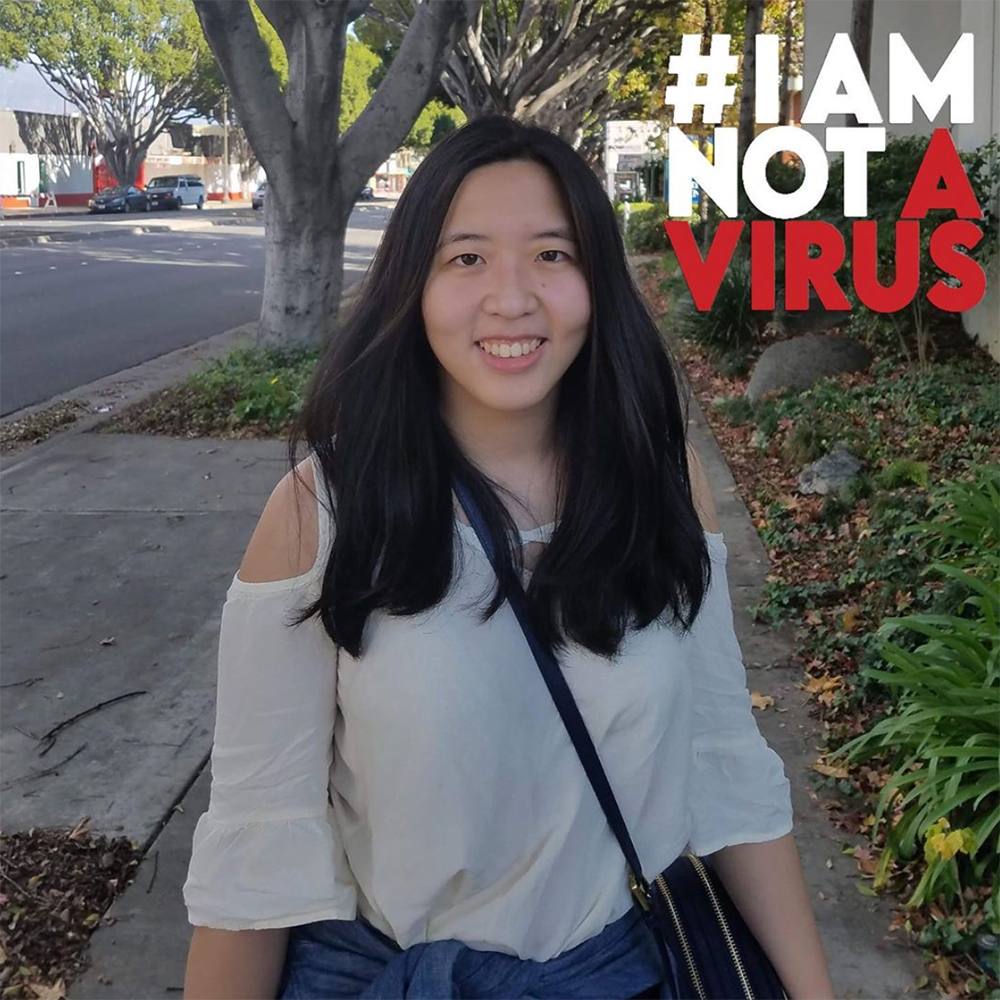
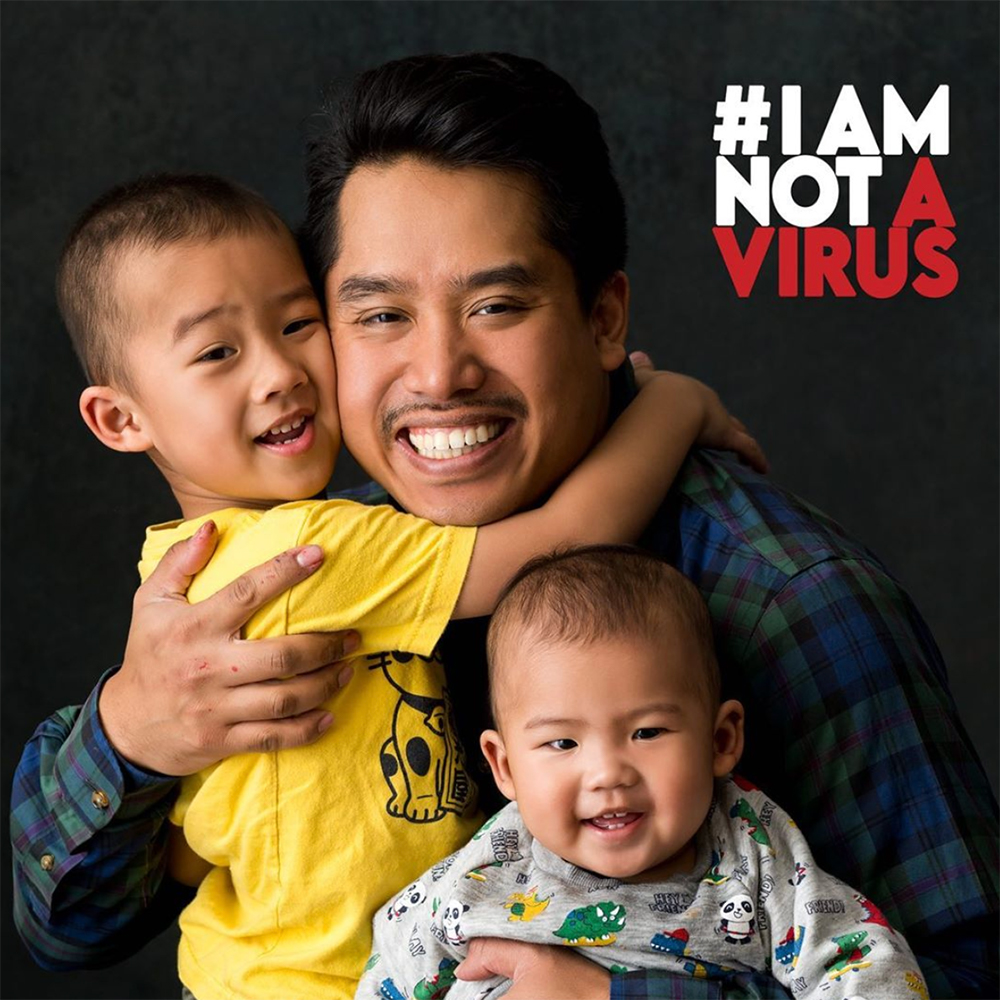
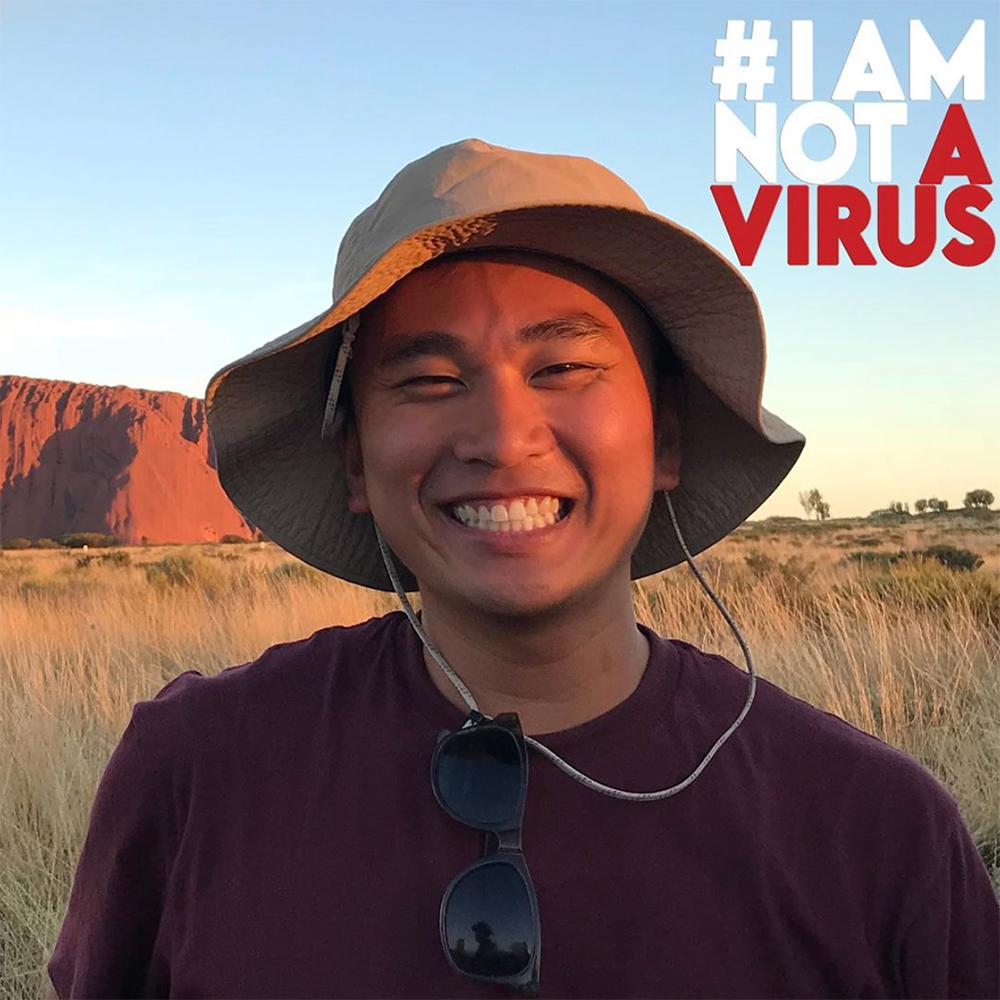
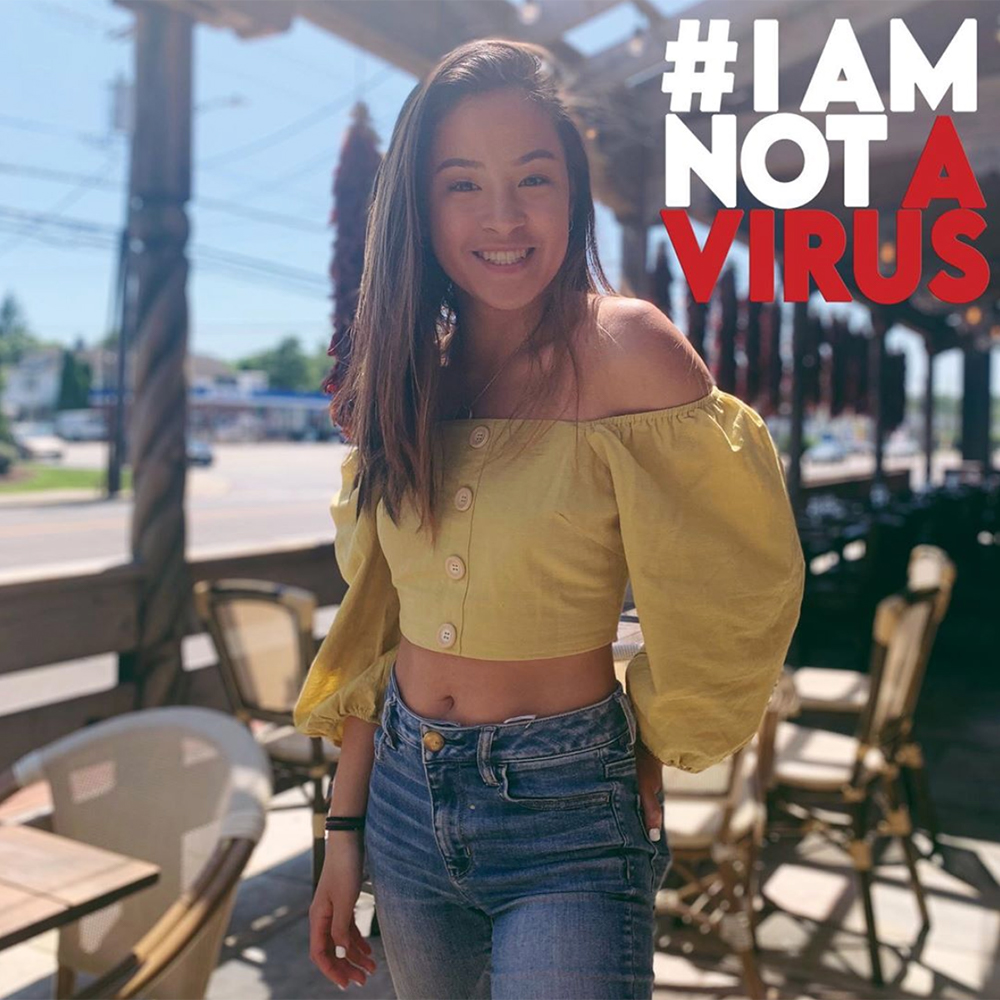
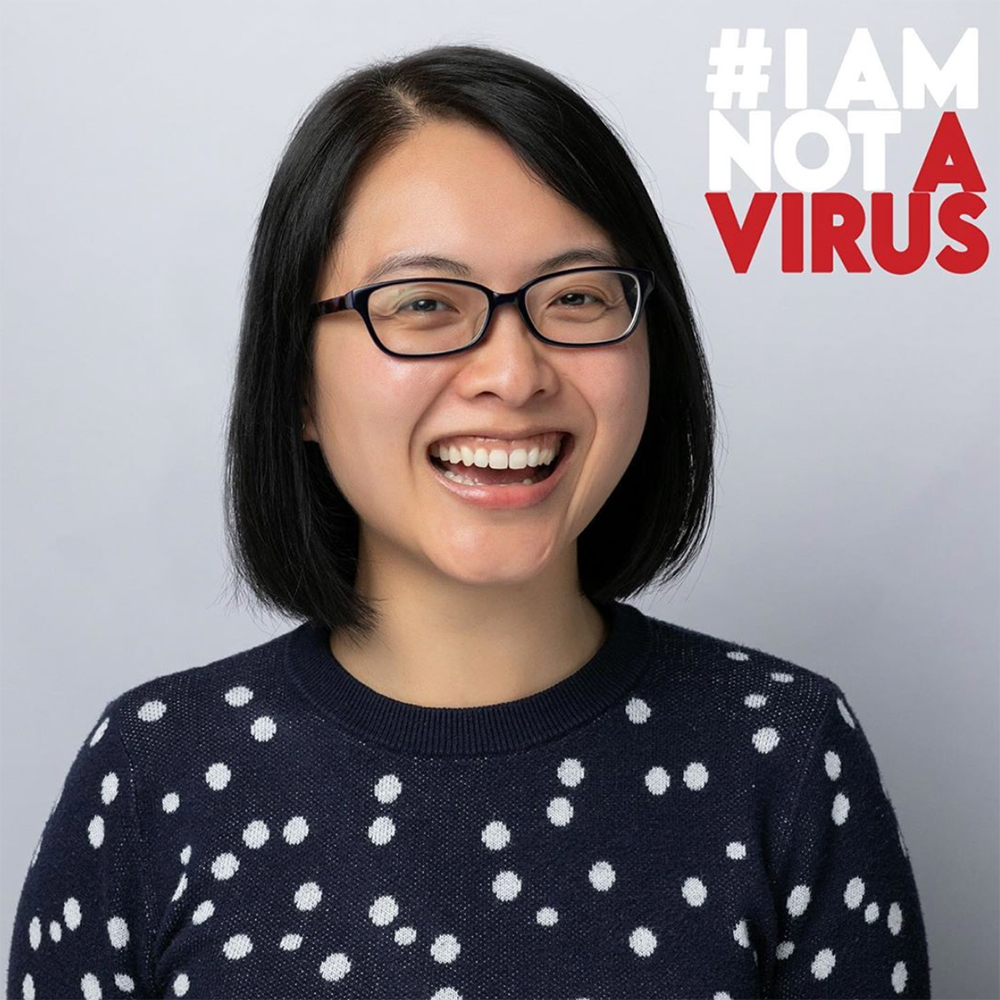
Leave a Reply